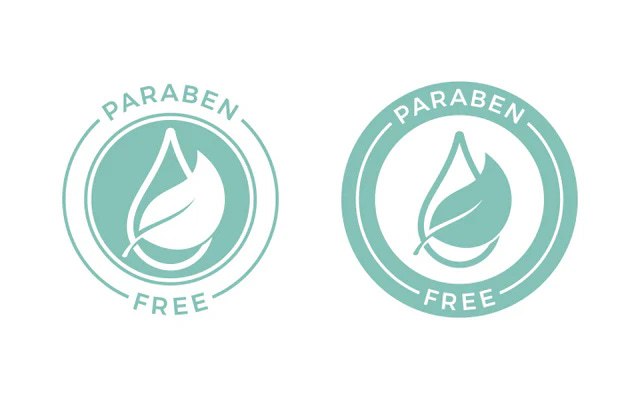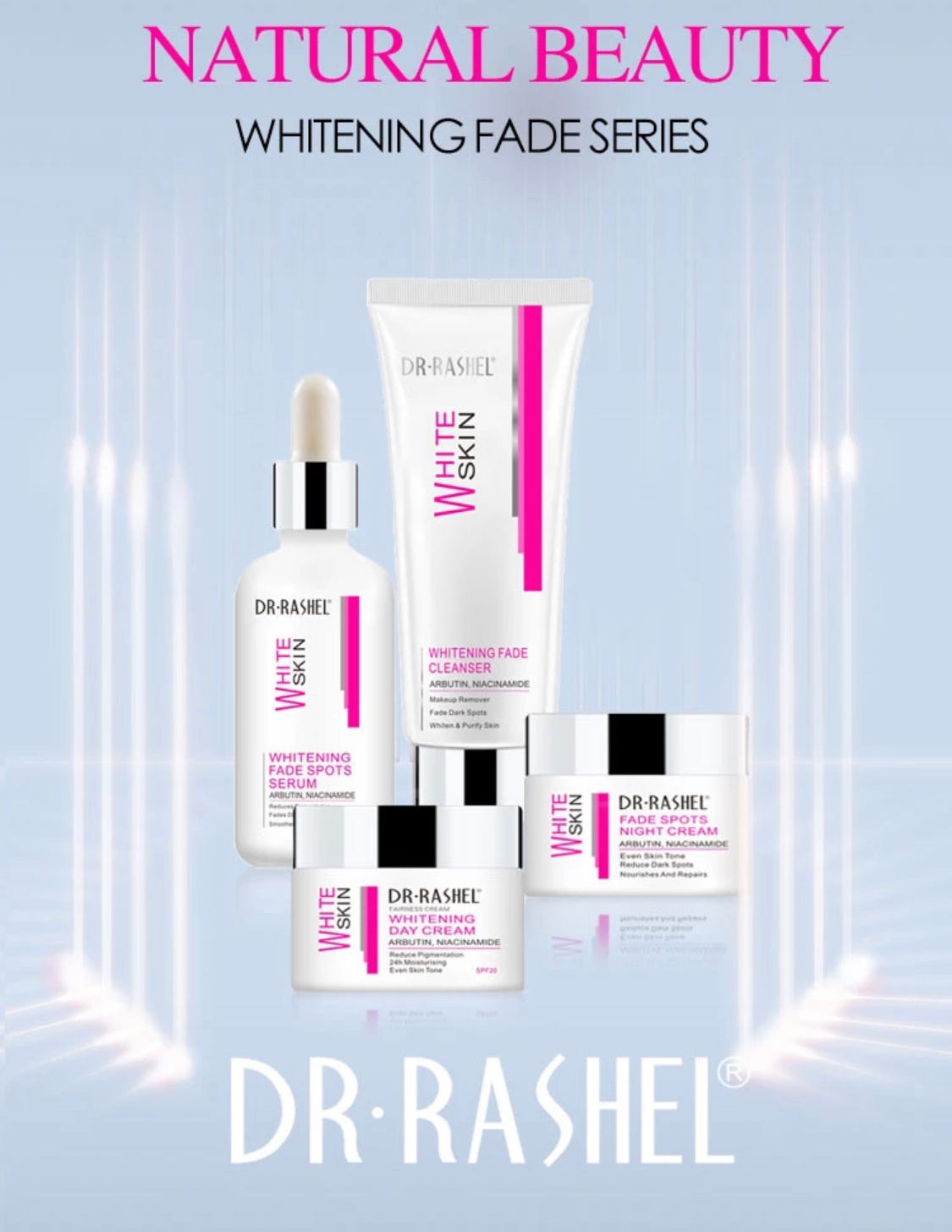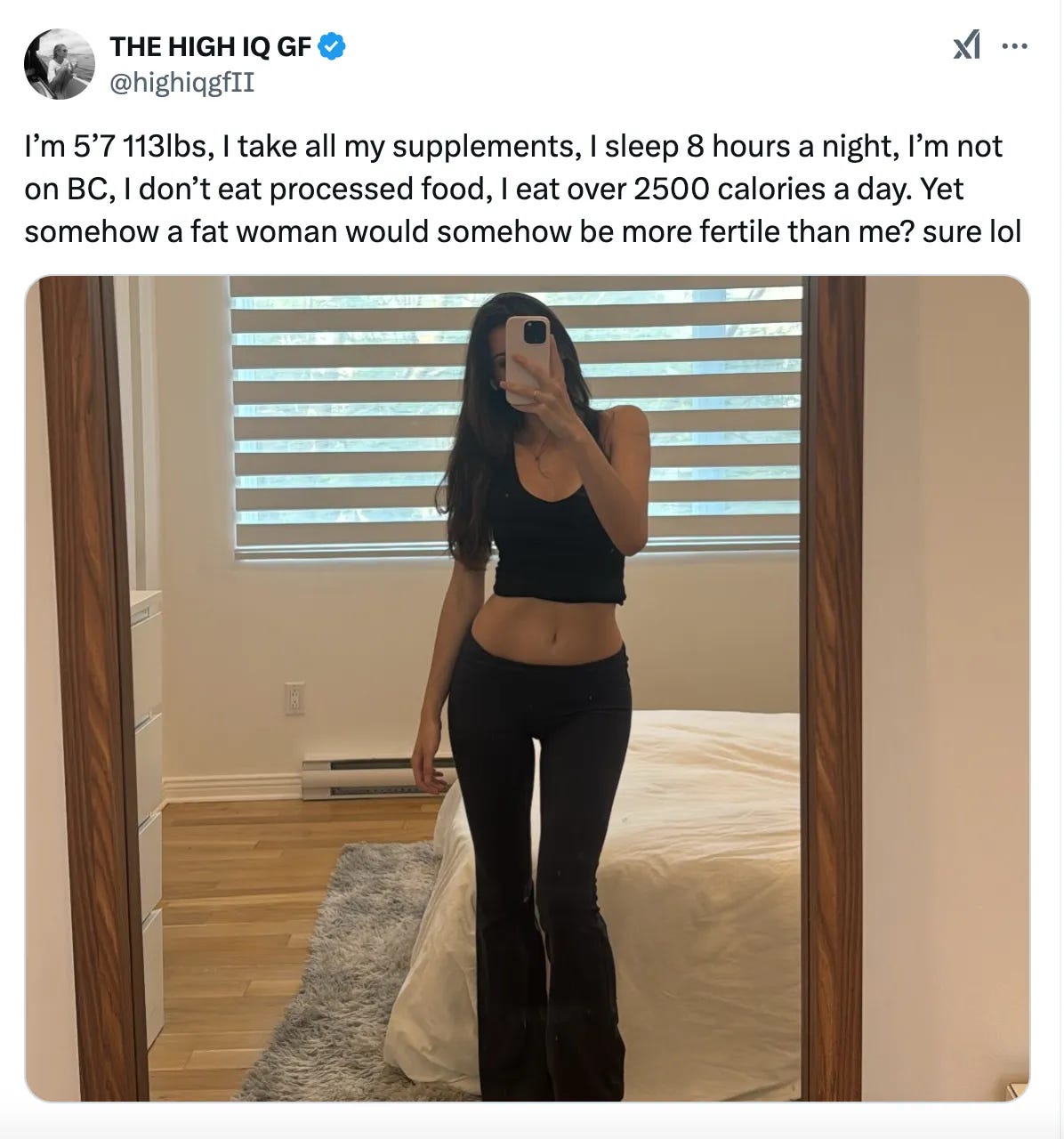Puritanism, born in 17th-century England, planted the idea that discipline and self-control weren’t just good habits but measures of virtue. Does this sound familiar to you? It does to me. These beliefs are alive and well today in the rules of wellness and beauty culture. Skincare marketed as free of “toxins”, diets that promise a clean slate and the pursuit of lookmaxxing all echo the Puritan obsession with avoiding sin - turning control into the path to freedom, or at least the illusion of it.
In today’s world, the sins are different: eating the wrong kind of food, not wanting children as a straight woman, or not measuring up to impossible beauty standards. This lingering obsession with purity still shapes how we live, vote, shop and judge, and understanding its roots might just change the way we see it all.1 Let’s prepare for a little deep dive and connect the dots together.
I remember the first time I became aware of parabens. A “dirty” and “scary” ingredient in cosmetics. I had no idea what they were exactly, or why they were bad. I just felt this big emotion about it. Titles of articles had slowly settled into my head, starting to whisper their sensationalist words to me whenever I was walking through beauty product aisles. I wasn’t really eating much at the time, and all I ate was organic fruit, nuts, and vegetables. I was very good at eating “clean” and staying underweight. I remember being at my parents’ house, washing myself in the shower with a regular shower gel. I checked the ingredients list for the first time in my life. METHYLPARABEN. My uninformed brain imagined microscopic organisms crawling on my skin, and I felt like I was poisoning myself. Fear washed over me and I felt out of control. It was the exact same emotion I felt when I ate something I deemed not “clean.” I swore to myself never to wash with anything from a store that wasn’t a “green” store. Whatever that meant.
Fast forward over ten years, and I now work with chemists and toxicologists on a regular basis as a skincare product developer. I know now that I was lied to, in true capitalist fashion, by the beauty industry. Fear sells best. I also understand that, as a vulnerable young woman searching for my identity and coping with an eating disorder, I was the perfect target audience for purity-branded products like “clean beauty.” Unfortunately, things have only gotten worse.
Purity is having a moment. It not only whispers in clean beauty routines, but also in raw meat diets, politics, and social media captions complaining about the toxins of modern life. These trends promise a return to simplicity, but the undercurrent is darker: an ideology of control that conflates purity with superiority.
Rudolf Steiner and Weleda
This isn’t only an issue from the last decade. In the early 20th century, figures like Rudolf Steiner extolled the virtues of “natural” living, blending mysticism with pseudoscience. He called this movement Anthroposophy.
Rudolf Steiner, along with physician Ita Wegman and chemist Oskar Schmiedel, co-founded Weleda in 1921. Steiner's anthroposophical principles significantly influenced the company's foundation and operations.
Anthroposophy, which combined spiritual beliefs with practices like biodynamic agriculture and alternative medicine, had a complex and often troubling relationship with Nazi ideologies in the early 20th century. Some Anthroposophical ideas, particularly those linking spiritual evolution with racial hierarchies, aligned uncomfortably with National Socialist ideals. While certain practices were promoted in ways that seemed to fit the regime’s worldview, some argue this alignment was more about ensuring the movement’s survival than genuine ideological agreement.2 Either way, we can’t ignore the natural superiority to fascism pipeline.
Weleda building in Schwäbisch Gmünd, Germany
In recent years, Weleda’s anti-vaccine stance rooted in Steiner’s skepticism of modern medicine has sparked backlash. During the pandemic, anthroposophical groups associated with the brand became notable for spreading vaccine misinformation, casting a shadow over what was still largely seen as a positive legacy.3 But human underbelly rhetoric like the Appeal to Nature fallacy in combination with a growing awareness around climate change keeps ensuring the brands success, year after year.
These points of view persist subtly in the brand’s modern marketing, which continues to emphasise purity and natural superiority. For example claiming they only use botanical ingredients, while demonising - perfectly safe - synthetic ingredients. Or playing into consumer biases around green marketing (it looks natural/green so it will be better for the planet) rather than focusing on genuinely sustainable practices.
Additionally, it is important to remember that while Steiner’s philosophies are experiencing a resurgence, they were far from harmless. Often overlapping with eugenics and racial hierarchies.4 Today, echoes of these problematic ideologies still remain.
Wellness + beauty’s purity obsession
The link between purity and whiteness in Western culture - rooted in colonial and religious histories - remains deeply embedded. Wellness narratives often reinforce this association through representation, language, and whitewashing. Practices like yoga and meditation, which originate from South Asian traditions, are frequently stripped of their cultural significance and marketed by white influencers to affluent Western audiences.
This whitewashing not only removes the cultural roots of these practices but also redefines wellness as a privilege reserved for a white, aspirational ideal. Words like 'pure,' 'detox,' and 'natural' tap into old biases that link whiteness to moral and physical superiority. These ideas go beyond wellness, reflecting larger societal patterns, such as the rise of populist rhetoric, where concepts of purity and exclusion are used to protect traditional power structures under the pretense of preserving heritage and identity.
Is wellness always tied to purity? The history of self care tells us otherwise. Indigenous self-care practices are often not about purity at all. And in 20th century USA, during the Civil Rights Movement, self-care became a political act. The Black Panther Party’s free clinics and healthy food programs empowered Black communities against systemic oppression. Leaders like Angela Davis, Ericka Huggins and Rosa Parks used yoga and meditation to sustain their fight for justice. In the women’s movement self-care helped women navigate sexism in health care and society. By the late 1970’s, self-care branded as wellness entered the scene, shifting self-care away from politics to holistic fitness and eventually mainstream commercialisation. Today, the wellness industry sells us self-care as products to look better and feel better.
I think todays’ wellness has the potential to be about more than commercialisation, even in Western society. It can be about slowing our pace, letting go, integrating silence and connecting deeper with community and the self. But clean eating, strict skincare + supplement routines and rejecting indulgence often reflect deeper cultural ideas about control and exclusivity.
It raises the question: who defines these rules, and whose standards are being upheld? The connection between whiteness, wealth, class, and access to wellness cannot be ignored, as these factors often align with privilege, especially in the Western world. The pursuit of wellness, while framed as universal, is steeped in narratives that exclude and prioritise certain bodies, behaviours, and communities over others.
As a white female model, my privilege meant I was never pressured to lighten my skin, undergo a nose job, or conform to invasive beauty practices to meet industry standards. My Eurocentric beauty privilege granted me a long career as a model in an industry obsessed with white-centric ideals. I wasn’t “good at my job,” as clients said at the time. Or maybe I was, but first and foremost I was white. With a European face. Thin, and youthful-looking. In a world shaped by these narrow ideals, it’s no surprise that brands wanted to work with me. I still often reflect on the space I occupied - space that could have gone to someone who deserved it more or needed it more, but who didn’t fit the industry’s narrow definition of beauty.
My clean beauty practices as a model
Clean eating had taught me how to make self-control “fun”. I didn’t even have to be hungry all the time anymore, and it made hiding my eating disorder easier. I always loved researching things. I loved weighing my food, knowing exactly how many macros and micros I consumed in a day and especially - of course - tracking how well my calorie deficit was going. Getting underweight landed me a pretty successful career as a model, at the same mother agency as someone I really looked up to at the time (this was pre-pandemic, by the way): Doutzen Kroes.
The EWG model. The EWG is not a scientifically reliable source, but a lobby to sell organic produce.
Clean beauty held a similar promise, or so it seemed. I couldn’t quite explain why it sounded so appealing at the time. It felt more emotional than rational. If I had to describe the emotion, it would roughly be this: I loved detoxing, so I loved clean beauty. I wanted to feel clean, inside and out. Rubbed and scrubbed and sanitised, ideally. Because somehow, I felt dirty and not good enough. I didn’t know why at the time, but clean beauty felt like part of the solution. I wanted to take the best - or most extreme - care of myself. I wanted the planet to be okay, no animal harm, no illnesses in humans. What could be wrong with that? And why wasn’t every beauty brand “clean”? Must’ve been the corrupt, elitist world, I thought. Evil scientists and angry venture capitalists. My confusion was real when I got my first rash: a severe allergic reaction on my jaw and neck, caused by the essential oils in a Weleda product. How could such a pure product cause me a rash like this? I remember asking a make-up artist. She looked confused and said: “it’s impossible, it’s a natural product! Must’ve been a reaction to something else.”
Clean beauty
The beauty industry thrives on the purity narrative. I just found this video of the amazing Mina Le explaining very clearly what I’ve been preaching with Soft Glow for the past few years (although I have some notes: the EWG is not a reliable source, beauty product development is under very strict regulations and parabens used in cosmetics have long been debunked as being unsafe). Clean beauty markets itself as a rebellion against toxins, positioning products as saviours from the harms of modernity.
Much like clean eating - though arguably with even less scientific backing - it initially gained traction within the yoga- and natural-wellness communities before infiltrating the mainstream. Rooted in fear-based marketing, it emphasises being "free from" an extensive list of ingredients deemed harmful or "toxic," despite the lack of substantial evidence supporting these claims.
Often (or always actually, lol), it also disregards the fundamental rule of chemistry: the dose makes the poison. Advocates selectively cherry-pick scientific studies and inconsistently apply their own standards. Lavender, for example, is a known carcinogen, yet that rarely makes it into the conversation. Over time, through repetition, clean beauty’s claims took on the illusion of truth, reshaping consumer perceptions and fuelling demand for products marketed as cleaner and safer.5
“I think ‘clean’ skin care is all a load of bollocks,” Ms. McCartney told Elle UK magazine in 2022 when she introduced Stella, her skin-care line. She said she understood why people use the word, “because it conjures up wonderful images of purity, but I would never use it.”
The cost of my obsession with purity as a model
Sexual trauma was the root of my own feelings of impurity, and feelings of inadequacy. My medicine for those feelings started with clean eating+beauty, “skin fasting” and facials with exclusively “natural” products. But when I had to prepare for Paris fashion week, after months of seeing a personal trainer twice a day and talking to a dietician several times a week, I had a strong feeling that it(I) was not good enough, that I needed to eat cleaner (less), train more(burn more), and go to the best( most extreme) skin therapist in town. My skin needed to be free of impurities. It would not be any other way. The skin therapist chose an extremely aggressive chemical fruit peel (“100% natural”) for my sensitive skin, only days before my train would leave to Paris. Along with only two other girls, I was in the running for two major beauty campaigns that could have changed my career and would’ve allowed me to enter the housing market at a young age. But because of extreme inflammation as a result of the facial, I could not work for over 12 days. All the preparations and investments had been for nothing, my momentum gone, and I did not book the campaigns. That incident, driven by my yearning for perfectionism, became the catalyst for my eventual burnout.
Tradwives, body counts, and the rise of misogyny: gatekeepers of purity
Some trends have gained noticeable traction in the past year - such as the rise of the modern, young tradwife and a growing preference among women for returning to their natural hair color.6 The Clean Girl aesthetic has been around for a few years now but seemed to be at its peak last year with Hailey Bieber influencing a lot of other white Tiktok creators creating video’s on how to do a look that has been around in Black culture for decades, sparking debate around race and class.
The tradwife movement romanticises a sepia-toned vision of 1950s domesticity, encouraging women to reject second- and third-wave feminism in favour of traditional homemaking roles steeped in nostalgia. Simultaneously, there has been a troubling increase in TERF (trans-exclusionary radical feminist) rhetoric, which frames exclusionary ideologies as a defense of 'biological womanhood,' cloaked in a misguided pursuit of purity."
Nara Smith’s popularity is driven by our collective obsession with Purity
Alongside these movements, the concept of a "body count" - a term used to shame women for their sexual history - has emerged as a modern purity test. Popularised through social media, it reflects a rising tide of misogyny that equates women’s worth with their adherence to outdated moral codes. This rhetoric, often perpetuated by male influencers or random men on male podcasts, reasserts control over women’s autonomy under the guise of virtue.
While TERFs may not align with the domestic nostalgia of tradwives, their rhetoric similarly enforces purity ideals by policing the boundaries of womanhood. Alongside these movements, the rise of men caring about women's 'body count' reveals how purity is wielded as a tool of control across ideological spectrums. Together, these ideologies lean on nostalgia and moral superiority, casting modernity as decay and purity as salvation.
The wellness to far-right pipeline: Robert F. Kennedy Jr. and purity politics
Purity rhetoric transcends lifestyle trends and, in recent years, has made its way into political arenas, where it wields significant influence. Far-right and populist political movements in Europe have been on the rise, and have often relied on underlying purity rhetoric, including racism and fascism, to fuel this rise. In the US it is no different. Robert F. Kennedy Jr., a vocal anti-vaccine advocate, exemplifies how these ideas intersect with governance. His controversial appointment as a key public health advisor in Donald Trump’s administration caused widespread concern among medical professionals (while being celebrated by many wellness influencers).7 Kennedy’s rhetoric, deeply rooted in conspiracy theories and a rejection of modern medicine, amplifies the broader societal trend of mistrusting institutions while elevating ideals of personal purity - claiming our natural immune system can deal with major health threats or sun exposure, no medicine or sunscreen needed - above public health. Even going as far as wanting to eliminate the Food and Drug Administration. His prominence highlights how purity narratives can be weaponised to undermine science and reshape public policy.
Social media algorithms act as accelerants, pushing purity-driven content to larger audiences. We all know that these systems favour polarising, high-emotion narratives, enabling the spread of exclusionary ideologies. The rise of populist movements, bolstered by similar algorithms, reveals how these dynamics can be exploited. And of course the recent changes in Meta’s content policies and the banning and (temporarily restating) of TikTok reflect this change in zeitgeist like no other.
The Russian cyber intervention in the 2016 US election demonstrates the potential orchestration behind this polarisation, amplifying purity rhetoric to deepen divisions and consolidate influence. Like Populism, purity rhetoric thrives on the promise of control and simplicity in a chaotic world, offering both an emotional refuge and a manipulative tool in broader sociopolitical agendas.



Ashley English
The ancestral diet: meat, milk, and mythology
Ancestral diets, with their raw meats and dripping bone marrow, idealise a pre-industrial past, claiming that primal eating heals what modern food has supposedly ruined. This purity-driven trend rejects plant-based foods, seed oils, and grains in favour of raw milk, organ meats, and grass-fed steak. Influencers with pilates bodies glamourise this lifestyle by by arching their backs in aspirational poses while drinking raw milk with a glass straw.
A great example of this is Ashley English, a lifestyle influencer with a sun-kissed aesthetic and softly narrated videos. Her posts romanticise a raw diet of meat and milk while rejecting most vegetables and sunscreen. The glossy allure of her lifestyle conceals the dangers: the well-documented risks of raw food consumption, the environmental impact of meat-heavy diets8, and the health consequences of forgoing sun protection. Yet her curated feed frames this extreme approach as not only attainable but aspirational - a purity you can buy, if you buy her ebooks.
Ironically, this “natural” lifestyle contradicts its harmony-with-nature branding: it often ignores the moral contradiction of claiming to love nature while glorifying the consumption of animals, which are an integral part of the ecosystems such lifestyles claim to respect.
The environmental hypocrisy is also pretty glaring. Meat production drives nearly 60% of agricultural greenhouse gas emissions, yet conspirituality influencers double down on its glorification. Worse, the meat lobby allegedly funds disinformation campaigns promoting these diets, as highlighted in reports by Sentient Media and KALW,9 which reveal efforts to obscure the industry’s role in ecological harm through influencer narratives. Purity here isn’t just a lie - it’s a smokescreen.
In these conspirituality wellness circles, where Ashley gets her popularity from, there is a new kind of competitive purity at play. A 'fertility Olympics' reminiscent of dystopian fiction, where influencers obsess over who can appear the most fertile, not out of a desire for children, but because a 'fertile' body (thin, muscular, supplement-packed, and free from contraception) has become the ultimate status symbol in an era of declining birth rates (as explored here)
Similarly, Alex Gooding presents purity through faith. Celebrated for carrying a life-threatening ectopic pregnancy to term, her story is framed as an act of following God's will. A pure, natural woman. Ignoring modern medical advice. A hero. This narrative emerges at a time when abortion rights and other women’s rights are actively being rolled back in several ”progressive” countries, amplifying a culture that glorifies women’s sacrifice while stripping away their autonomy10. What’s packaged as heroism highlights the darker side of purity rhetoric: control disguised as virtue.
These purity movements aren’t accidents. They thrive on fear11 and promise control in a chaotic world, fuelled by consequences of late-stage capitalism. Big corporations and institutions, failing to address inequality, high quality health care and climate crises, have left people disillusioned and seeking alternatives.
Purity movements, with their promises of personal agency and control, exploit this frustration by presenting themselves as the antidote to systemic failures. Just take a good look in the mirror or within, and fix yourself. Optimise, strip yourself of all the bad. Fix your body, brain and shift how you view the world. You are in control. Through influencers, aesthetic branding, and strategic marketing, they slip into the mainstream, reshaping culture under the guise of empowerment. Yet the cost is high: misinformation, diminished rights, and the return of hierarchies disguised as empowerment, masquerading as progress.
Nuance doesn’t sell but it’s time to stop falling for sensationalism
The purity narrative preys on moments when we feel overwhelmed and 'contaminated' by overindulgence in rumination, misinformation, food, or blue light. It claims to fix everything from low self-esteem to procrastination and even trauma. In a chaotic world full of conflicting information, amplified by populism and social media, it frames purity as the ultimate answer.
Yes, the girls are overwhelmed, but instead of chasing unattainable ideals and sensationalism, let’s root ourselves in science, inclusion, and true progress. And let’s try to maintain a regulated nervous system while we’re at it.
For me, my quality of life improved so much when I realised I don’t have to worry about toxic chemicals in my skincare because professionals have already done that work for me. The same goes for food - I’ve found that as long as I focus on balance and how it makes me feel, I can eat without guilt or fear. That’s what true simplicity looks like - free from conspiracies and overhyped marketing. These days, I’m extra skeptical of anything in the media that leaves my nervous system feeling unsettled. Truth + science are always nuanced, and in my experience, the answer to a less chaotic world lies in calmness, thoughtful fact-checking, and good old common sense.
Thank you for reading this far, it means so much. I’ll see you next time!
<3 Romy
"The Purity Movement and Its Social Impacts," The Atlantic, 2023.
Uwe Werner, “Anthroposophy in the Time of National Socialism,” Journal of Modern History, 1999.
Sarah Wild, “Anthroposophy and the Pandemic: Vaccine Misinformation in Steiner Circles,” Nature Medicine, 2021.
Peter Staudenmaier, “Race and Redemption: Racial and Ethnic Evolution in Rudolf Steiner’s Anthroposophy,” e-Publications at Marquette.
"Clean Beauty or Clean Con? An Industry Overview," The Guardian, 2023.
“Could The Shift In Beauty Standards Have Predicted Trump’s Win?” Dazed, 2024
“Robert F. Kennedy Jr.’s Role in Trump’s Administration Raises Alarms,” The New York Times, 2024.
"The Environmental Impact of Raw Meat Diets," Scientific American, 2024.
Poore, J., and Nemecek, T., “Reducing food’s environmental impacts through producers and consumers,” Science, 2018.
"The Rise of Influencer Marketing in Purity Narratives," Nature Human Behaviour, 2024.
“How the Meat Industry Uses Disinformation to Shape Public Opinion,” Sentient Media, 2024.
How Big Ag Shapes Public Narratives,” KALW, 2024.
“US Doctors Face Legal Risks in Pregnancy Complications,” New York Times.
"The Wellness Industry's Exploitation of Fear," Harvard Business Review, 2022.
Wong M. Fact-check Friday: What’s the deal with parabens in cosmetics?. Lab Muffin Beauty Science. March 21, 2014. Accessed December 2, 2024. https://labmuffin.com/fact-check-friday-whats-the-deal-with-parabens-in-cosmetics/
https://time.com/6292191/robert-f-kennedy-jr-conspiracy-theory-vaccines-essay/











Fantastic piece Romy, thank you for sharing! While some elements here definitely overlap with the Regressive Nostalgia, I actually think it's even more aligned with my previous post on Natural Virtue.
Love this piece and how you tied the beauty and wellness industry to the rise of populism. And your observations on the need to feel pure, cleansed, and in control in an increasingly chaotic world are spot on.
As someone with a history of cPTSD, my life is a trail of seeking control and “cleanliness”. But I’m a curious person, so I always found my way out of obsessions and addictions, eventually. I was obsessed with fitness, clean eating, clean make up, and even having a minimalist clean esthetic. But I lost my magic and soul in the process. I forgot about my vibrant heritage and all the things that make me unique. Even though I’m now messy and constantly experimenting, I feel so much more alive. It looks so innocent and shallow on the outside, but the obsession of perusing “purity” is a slow and ugly death.
I also recently read an article about this new obsession with neutral colors and how color is slowly disappearing from the internet and our surroundings (e.g. interiors) because it’s associated with indigenous cultures and the feminine, and has always been seen as inferior by populist movements. This, in combination with your article, makes me think of Walter Benjamin’s idea of aestheticization of politics.
With influencers and algorithms, our behavior, desires, and choices are being socially engineered without us knowing. When we think of utilitarian societies - fictional like The Handmaid’s Tale, or real like fascist Germany - we immediately conjure an esthetic, and it’s not a coincidence. But somehow we assume that we will be explicitly told what to wear and how to behave by a tyrant.
But what if tyranny now is silent and algorithmic, and we’ll all wake up one day wearing beige and clean make up, and eating the same clean diet? Oh wait.